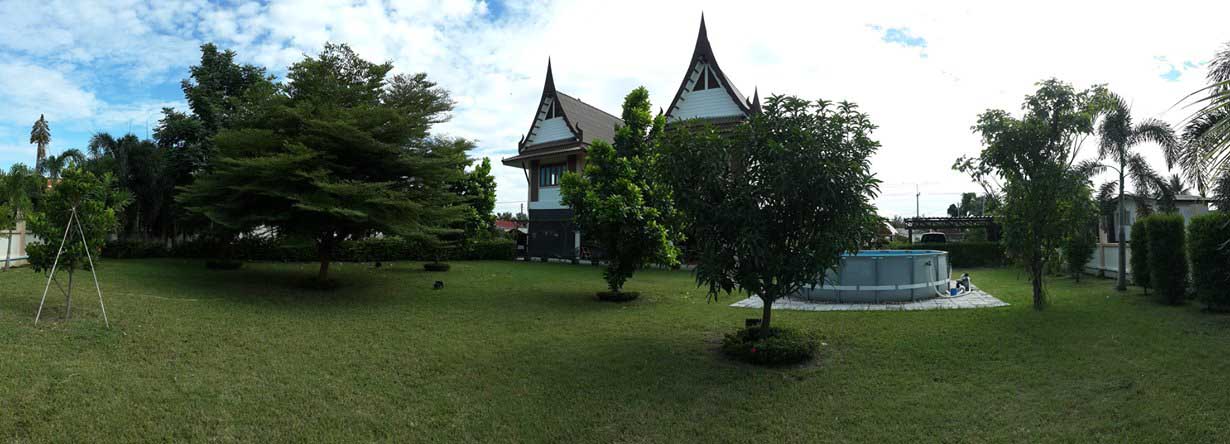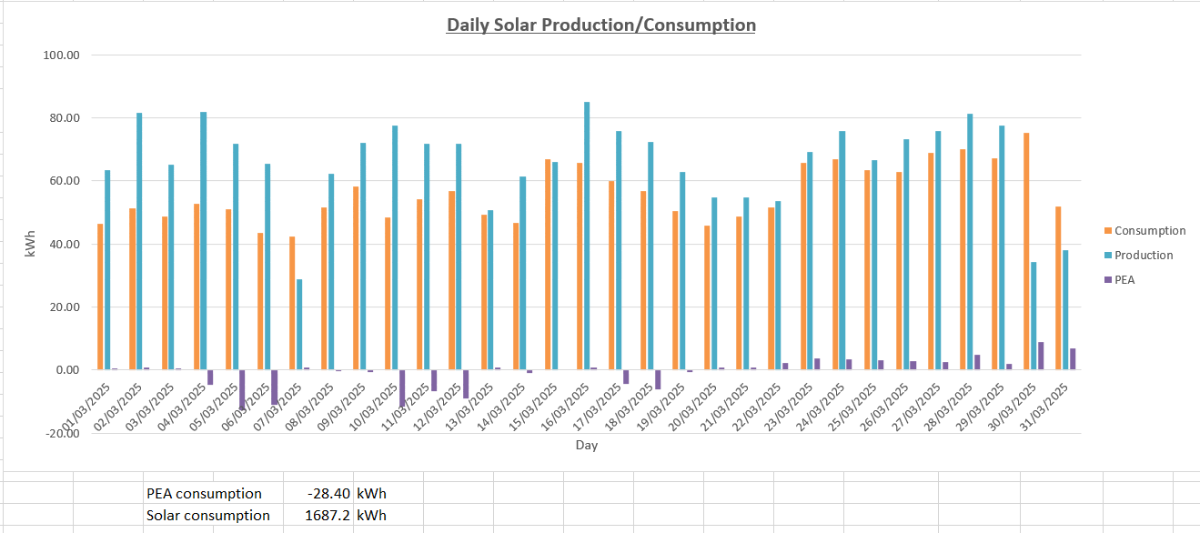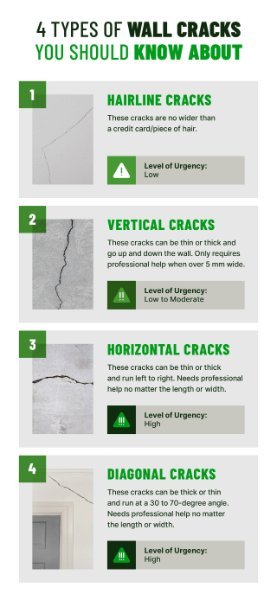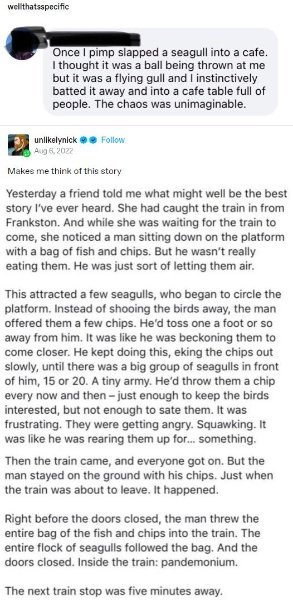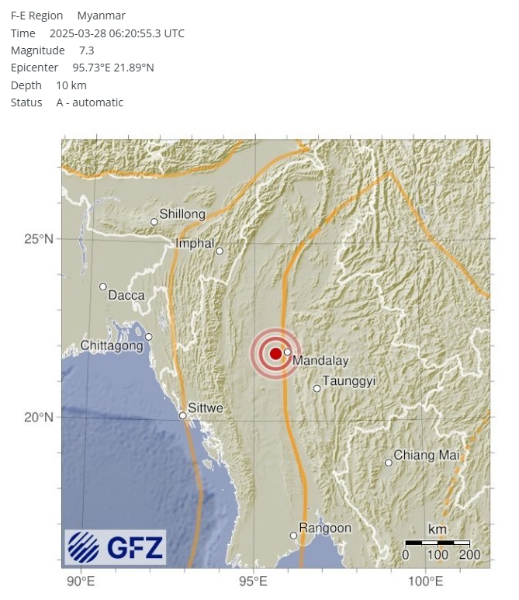-
Posts
46,520 -
Joined
-
Last visited
-
Days Won
2
Everything posted by Crossy
-

Thailand Urged to Certify Hotel Safety Amid Post-Quake Tourism Concerns
Crossy replied to snoop1130's topic in Thailand News
Whilst they are at it, can they certify fire safety, evacuation etc. etc. etc.- 23 replies
-
- 10
-

-

-

-

How about a solar car port on a budget?
Crossy replied to Crossy's topic in Alternative/Renewable Energy Forum
Last month we had a perfect-storm 😞 A week of dull days combined with family visiting; It took 9 days for the inverters to finally decide the packs were low (15%) and start using the grid. We never intended to go as far as we have, but we got a stack of panels and cells for very good money and things sort of ran out of control it's certainly over-kill for a system that has grid available, but we really don't do the "economy lifestyle" that might be required if we were actually off-grid. -

How about a solar car port on a budget?
Crossy replied to Crossy's topic in Alternative/Renewable Energy Forum
Numbers for March 2025. PEA was actually negative due to exporting to catch up with dull days in February (billing is 16th-19th depending upon month length). We seem to be having another round of dull days at present and we have our teen grand-daughter (arctic aircon + loooong showers**) here, so more grid usage is on the cards 😞 **Here is yesterday. The load blip at about 18.30 is my shower, the bigger blip at 20.30 is Madam's shower. The mountain at 22.15 is Little Miss luxuriating with her shower heater on full chat! You can also see her 12,000 BTU non-inverter A/C cycling. Love her to bits, she's a great kid 🙂 -
Thai senate meeting today, not very well attended for some reason. https://www.tiktok.com/@ajtj54/photo/7487829464114531591?is_from_webapp=1&sender_device=pc
-
Unless you think it's reading incorrectly, I'd leave it be, these things go on forever, literally. Just change to your wife's name then change to a new meter at a later date (doing multiple things at once always causes me grief). Best to check what size cable they will want to the house too. The modern meters "should" be Cu/Al compatible, the end at your board is your problem of course.
- 1 reply
-
- 1
-

-

Earthquake damage. Any cement/rebar structural engineers in the house?
Crossy replied to uncletiger's topic in DIY Forum
-

Thailand's Digital Card Chaos: Say Goodbye to TM6, Hello to Confusion!
Crossy replied to webfact's topic in Thailand News
https://tdac.immigration.go.th/arrival-card/#/home -

Earthquake damage. Any cement/rebar structural engineers in the house?
Crossy replied to uncletiger's topic in DIY Forum
Is it just the render on the post that's cracked? That would be just fine to fill and paint. -
-
-
-

High-rise buildings in Bangkok resistant to earthquake
Crossy replied to webfact's topic in Thailand News
Let's lock this 9 year old thread. Do feel free to post in one of the many other earthquake threads. -
Definitely a bit of a wobbler.
-
-

Earthquake: We just had an earthquake in Northeast Lamphun Province
Crossy replied to connda's topic in Chiang Mai
Northern BKK, had water sloshing out of the pool! -
We will (as usual) stay home during the celebrations. We will have many family members and a couple of Western friends who want to avoid the madness staying with us. The youngsters (and some not-so-youngsters) will be dispatched along with a minder (probably yours-truly) to the local water fight area for a thorough soaking of course. The "oldies" (that also means me) will be going to the local wat for a traditional water pouring, of course that usually ends with a large bucket of icy, but holy, water
-

Do I Have to Carry My Passport
Crossy replied to NickyLouie's topic in Thai Visas, Residency, and Work Permits
When I'm actually working, my PP and WP are in my work bag with my laptop etc. They stay safely at home at other times. I have a pink ID and keep recent scans of the PP and immigration stamps on my phone. In over 20 years here I've never actually been asked. Of course, this is famous last words and I'll run afoul over the weekend -

Blast from the Past - 60's, 70's, 80's,90's Music (2025)
Crossy replied to CharlieH's topic in Entertainment
No idea why but this just slid into my consciousness. -
I've had those too, invariably hacked dormant accounts. Just block and the problem goes away. I did try talking to Facebook about the somewhat unalive status of the member but they wanted all sorts of information that I couldn't provide so AFAIK the account is still there if it's not been disabled for breaking the rules.
-
I really don't think there's much merit in keeping this antique thread open. If anyone has a really good reason PM me to re-open.
-

How about a solar car port on a budget?
Crossy replied to Crossy's topic in Alternative/Renewable Energy Forum
Long ago when the earth was green and we started playing with fusion power the commercial fixings were silly money, so we went home-brew. Prices (and funds) are now less scary, although the fixings are still not what could be considered as cheap! -

How about a solar car port on a budget?
Crossy replied to Crossy's topic in Alternative/Renewable Energy Forum
Our huts at Thorn EMI in Wells (darkest Somerset) had signs saying "Fragile roof covering, use crawling boards" on the asbestos roof. I think we all understand what it's about 🙂 EDIT I did check on google Maps to see if the old TEMI site on Wookey Hole Road was still there. Sadly, like so many of the defence industry places I used to work at it's now a housing estate 😞 -

Request for CT advice/Information
Crossy replied to 007 RED's topic in Alternative/Renewable Energy Forum
Yes, you need a second CT. Yes, they can sit next to one another without interference. We were running like this (with the CTs less than an inch apart on the cable) for some months and everything worked just fine. Based upon Crossy's Theorem™ which states "You can never have too much solar", and assuming space and budget allow, I'd go for 6 panels and a 3kW inverter. You will start generating earlier and keep generating later.

